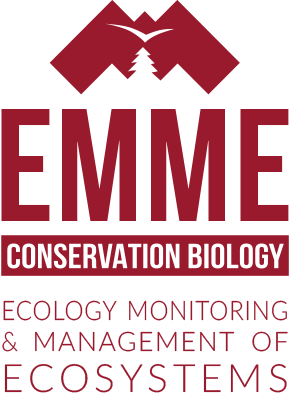Description:
The aim of this module is to introduce the concepts of behavioral ecology (fundamentals of behavioral ecology, survival strategy, environmental exploitation strategy, contribution of behaviour to conservation) and sustainable interactions (diversity of sustainable interactions, host-parasite co-evolution, evolution of virulence and defense strategies, ecological immunology, eco-epidemiology).
Learning objectives :
Theoretical learning outcomes:
• Knowledge of the basic concepts in behavioral ecology.
• Knowledge of host-parasite systems (evolutionary parasitology, ecological immunology, eco-epidemiology).
Teaching Methods:
Lectures, seminars, practicals.
Assessment:
Reports on the content of the sessions, oral and written exams.
Recommended Reading:
- Bucklin, A. & Rainey, P.B. 2002. Antagonistic coevolution between a bacterium and a bacteriophage. PROCEEDINGS of the ROYAL SOCIETY of LONDON B, 269: 931–936.
- Cadavid Restrepo, A., Yang, Y., McManus, D., Gray, D., Giraudoux, P., Barnes, T., Williams, G., Soares Magalhães, R., Hamm, N. and Clements, A. 2016. The landscape epidemiology of echinococcoses. Infectious Diseases of Poverty, 5(1).
- Combes, C. 2001. Parasitism : The Ecology and Evolution of Intimate Interactions. Chicago, Ill.: University of Chicago Press.
- Combes, C.. 1995. Interactions durables : écologie et évolution du parasitisme. Masson. 524p.
Decastaeker E et al. 2007. Host–parasite ‘Red Queen’ dynamics archived in pond sediment. NATURE, 450: 870-873 - Gaba, S. & Ebert, D. 2009. Time-shift experiments as a tool to study antagonistic coevolution. TRENDS IN ECOLOGY AND EVOLUTION, 24: 226-232.
- Giraudoux, P., Raoul, F., Afonso, E., Ziadinov, I., Yang, Y., Li, L., Li, T., Quéré, J., Feng, X., Wang, Q., Wen, H., Ito, A. and Craig, P. 2013. Transmission ecosystems of Echinococcus multilocularis in China and Central Asia. Parasitology, 140(13), pp.1655-1666.
- Liccioli, S., Giraudoux, P., Deplazes, P. and Massolo, A. 2015. Wilderness in the ‘city’ revisited: different urbes shape transmission of Echinococcus multilocularis by altering predator and prey communities. Trends in Parasitology, 31(7), pp.297-305.
- Marston, C., Giraudoux, P., Armitage, R., Danson, F., Reynolds, S., Wang, Q., Qiu, J. and Craig, P. 2016. Vegetation phenology and habitat discrimination: Impacts for E. multilocularis transmission host modelling. Remote Sensing of Environment, 176, pp.320-327.
- Patz, J., Daszak, P., Tabor, G., Aguirre, A., Pearl, M., Epstein, J., Wolfe, N., Kilpatrick, A., Foufopoulos, J., Molyneux, D. and Bradley, D. 2004. Unhealthy Landscapes: Policy Recommendations on Land Use Change and Infectious Disease Emergence. Environmental Health Perspectives, 112(10), pp.1092-1098.
- Schmid-Hempel, P.2011. Evolutionary parasitology. the integrated study of infections, immunology, ecology, and genetics. Oxford. Oxford University Press.
Related Media:
- E. Orsenna & I. de Saint-Aubin. 2017. Géopolitique du moustique. Ed. Fayard.
Coordinators:
Patrick GIRAUDOUX, patrick.giraudoux@univ-fcomte.fr
Yannick MORET, yannick.moret@u-bourgogne.fr





